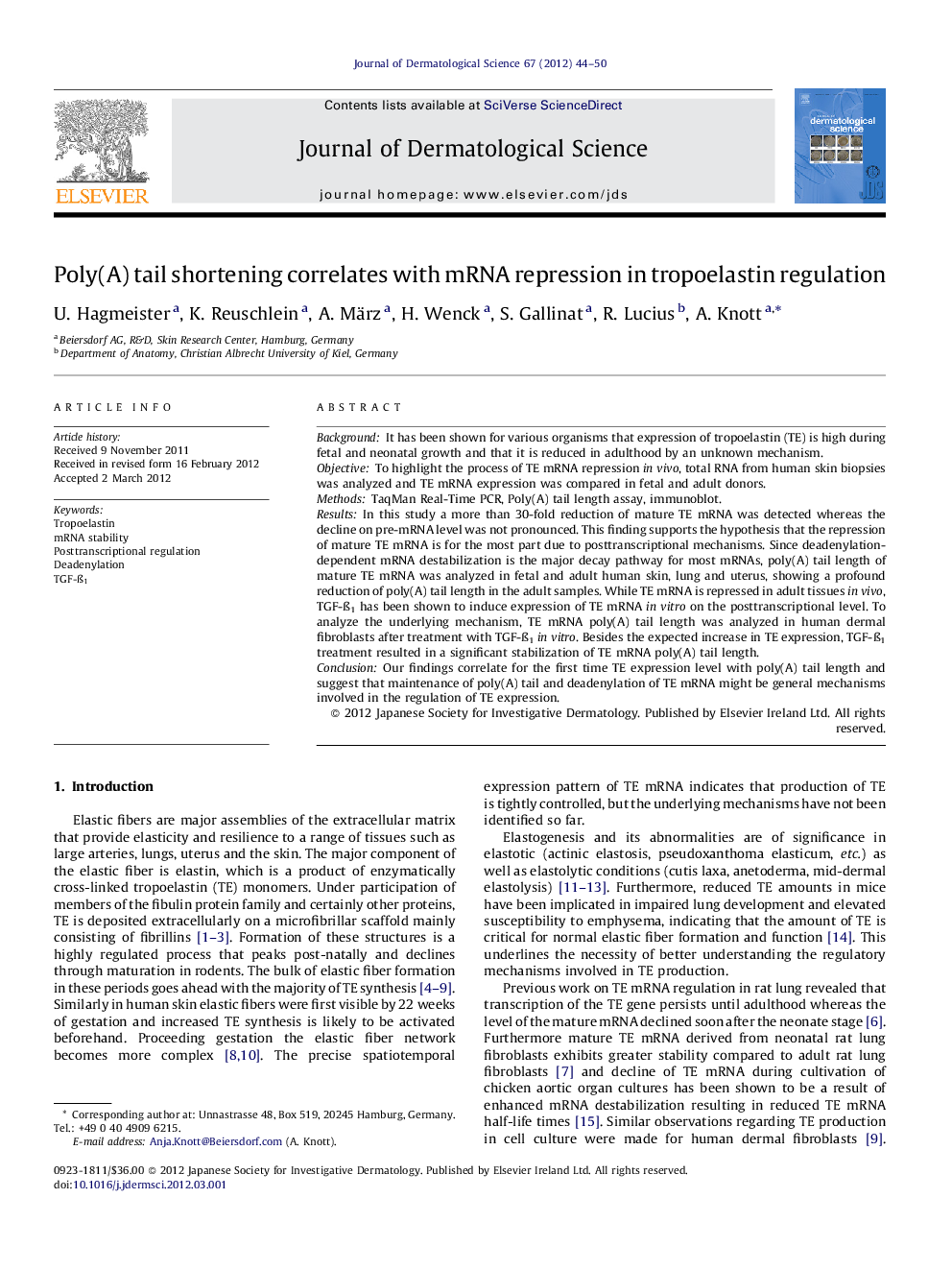| Article ID | Journal | Published Year | Pages | File Type |
|---|---|---|---|---|
| 3213088 | Journal of Dermatological Science | 2012 | 7 Pages |
BackgroundIt has been shown for various organisms that expression of tropoelastin (TE) is high during fetal and neonatal growth and that it is reduced in adulthood by an unknown mechanism.ObjectiveTo highlight the process of TE mRNA repression in vivo, total RNA from human skin biopsies was analyzed and TE mRNA expression was compared in fetal and adult donors.MethodsTaqMan Real-Time PCR, Poly(A) tail length assay, immunoblot.ResultsIn this study a more than 30-fold reduction of mature TE mRNA was detected whereas the decline on pre-mRNA level was not pronounced. This finding supports the hypothesis that the repression of mature TE mRNA is for the most part due to posttranscriptional mechanisms. Since deadenylation-dependent mRNA destabilization is the major decay pathway for most mRNAs, poly(A) tail length of mature TE mRNA was analyzed in fetal and adult human skin, lung and uterus, showing a profound reduction of poly(A) tail length in the adult samples. While TE mRNA is repressed in adult tissues in vivo, TGF-ß1 has been shown to induce expression of TE mRNA in vitro on the posttranscriptional level. To analyze the underlying mechanism, TE mRNA poly(A) tail length was analyzed in human dermal fibroblasts after treatment with TGF-ß1in vitro. Besides the expected increase in TE expression, TGF-ß1 treatment resulted in a significant stabilization of TE mRNA poly(A) tail length.ConclusionOur findings correlate for the first time TE expression level with poly(A) tail length and suggest that maintenance of poly(A) tail and deadenylation of TE mRNA might be general mechanisms involved in the regulation of TE expression.
